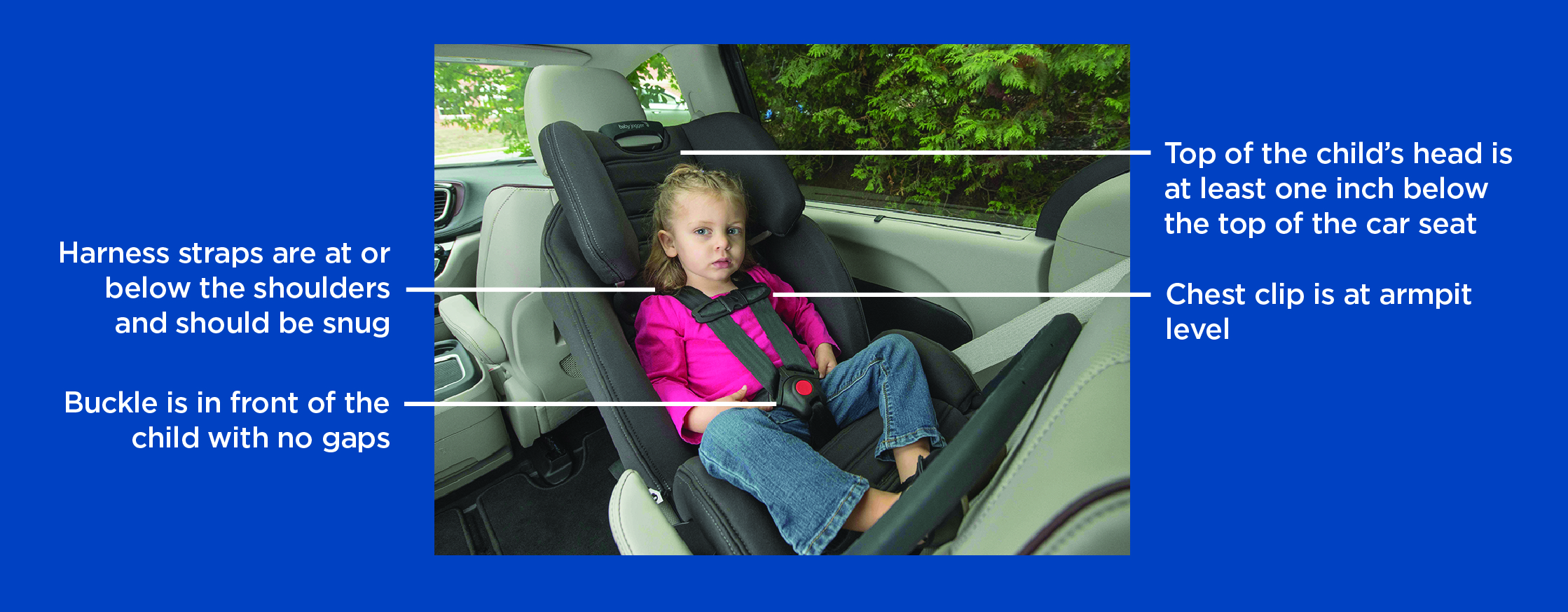Rear-Facing Car Seat
Print:
A rear-facing car seat is a seat that faces the rear of the car. Riding rear facing is safer than forward because the child’s head, neck and spine are better protected. Keep children rear facing as long as they are within the weight and height limits for the car seat.

Using rear-facing car seats correctly:
- Always check the car seat and vehicle owner’s manual for the correct way to use and install
- Never place a rear-facing child seat in front of an airbag.
- Check the car seat owner’s manual before using parts that did not come with the seat. This includes headrests, blankets and padding.
- Once installed, the seat should move no more than one inch from side to side or front to back at the belt path.
- It’s okay if your child’s feet touch the back of the seat. Keeping your child rear facing provides more protection.
- Do not use car seats that are old, expired or have been in a crash.
What comes next?
Children are ready for a forward-facing car seat if they are at least 2 years old and have outgrown the rear facing only car seat. If they are younger than 2 and outgrowing the rear-facing seat, look for a seat that goes rear facing to higher weights and heights. This may allow them to stay rear facing past the age of 2. Visit our website to learn more about the next stage.



